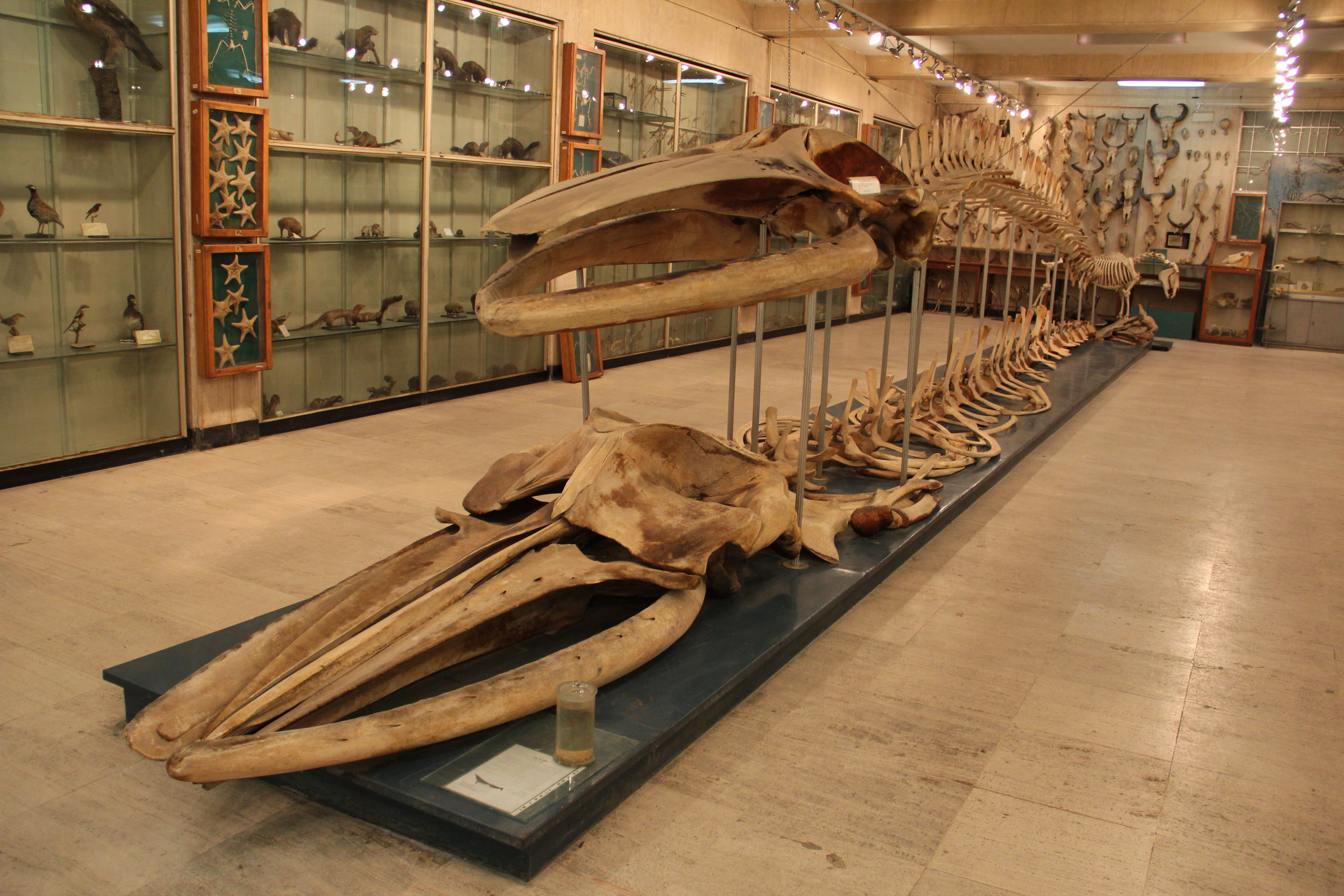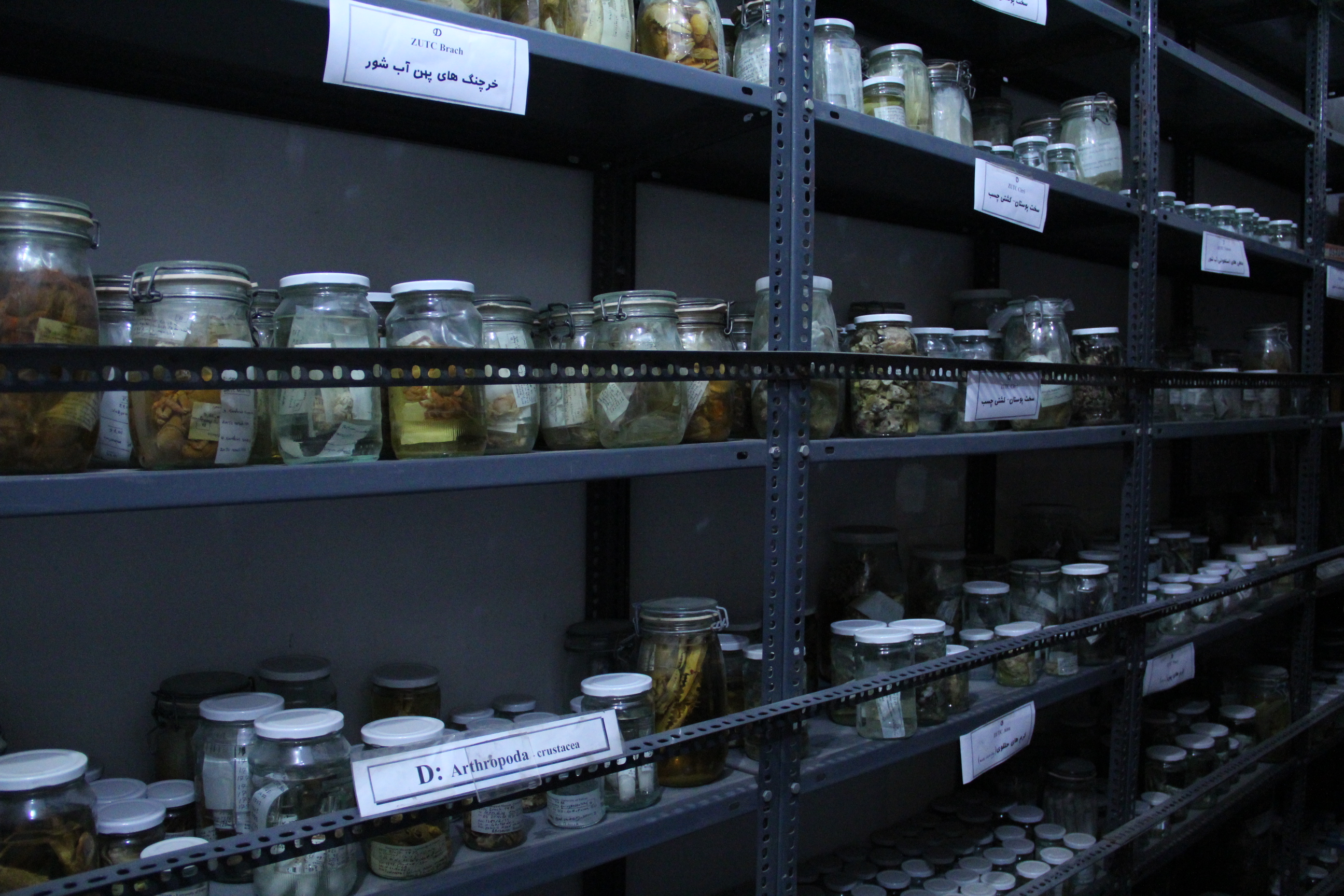Museum Sections - موزه جانورشناسی zoologymuseum
Sections of the Museum

Exhibition hall
Archive Museum
The archive and reference section, registered in the international collection of scientific museums under the name 'Zoology Museum University of Tehran Collection' with the code ZUTC, is responsible for preserving specimens of various Iranian animal species and making them available to zoology researchers for systematic and taxonomic studies

Exhibition Hall of the Zoology Museum
The museum's exhibition hall, spanning 800 square meters, is located on a single floor between the Biology Faculty and the Mathematics and Computer Science Faculty buildings, situated on the eastern side of the main Science Faculty building. It is comprised of the following sections:
Bird Display: This is the largest collection of its kind, featuring 357 taxidermied birds in natural poses such as flying, hunting, standing, and nesting. These specimens represent 202 species, including birds of prey, waders, pigeons, passerines, seed-eaters, and various waterfowl, collected from different regions of Iran. A smaller collection includes nectar-feeding birds, birds of paradise, silver and fire pheasants, and a donated toucan from outside Iran. Additionally, there are nearly 400 taxidermied specimens in a recumbent position for laboratory use, which are utilized for various research studies and laboratory training. A notable part of this collection includes birds from the Sistan region, which are the result of national and fundamental research projects conducted in the 1990s. A section of this collection displays bird eggs, including various passerines, waterfowl, seed-eaters, and ostriches, in showcases and frames.
Fish Display: This section contains a collection of over 200 specimens of various sizes and shapes, including cartilaginous, sturgeon, and bony fish from inland waters, the Caspian Sea, and the Persian Gulf and Oman Sea. These specimens are preserved in formaldehyde and alcohol solutions and stored in sealed glass jars.
Reptile and Amphibian Display: This section features over 50 species of snakes and lizards, a taxidermied crocodile, various specimens of two freshwater turtle species, one tortoise species, three sea turtle species, and eight species of newts, frogs, and toads from Iran.
Invertebrate Display: This section houses a large and diverse collection of invertebrates, including various worms, mollusks, echinoderms, and arthropods, especially insects and crustaceans. These specimens are preserved in chemical solutions in jars or dried and displayed in boxes, frames, and showcases.
Vertebrate Skeleton Display: This section includes a fascinating collection of complete bird skeletons, small mammal skeletons, a horse skeleton, an Indian elephant skeleton, various mammal skulls, a Persian zebra skull, reptile skeletons, and two unique and complete skeletons of a 15-meter humpback whale and an 18-meter fin whale.
History of Biological Sciences: This exhibition showcases artifacts and remains from the past, including models of original fossil dinosaur eggs, jaws of an ancient amphibian reptile, parts of a fossil skeleton of a one-million-year-old odd-toed ungulate, a 6,800-year-old complete human skeleton, and an elephant tusk fossil. Additionally, it displays old laboratory, workshop, and environmental equipment, such as old microscopes, micromanipulators, monocular microscopes, loupes, dissection sets, agar dish warmers, and scientific photography equipment.
Zoology Museum Reference and Archive Section
This section is located in a separate space on the first floor of building number 5, situated on Shafiei Alley, Ghods Street. It belongs to the museum complex. This collection houses over 6000 animal specimens from various geographical regions and ecosystems in Iran, collected and studied as part of scientific research projects conducted by professors and graduate students in zoology. These specimens have been identified using scientific methods and preserved in containers with chemical fixatives, along with museum codes and database records, and are stored in secure shelves. The reference museum collection (ZUTC) is a key resource for systematic and taxonomic studies and provides services to the zoology community in Iran and other countries. Therefore, creating an accurate database of stored scientific specimens is of great importance.
Given the research focus of the faculty of zoology sciences on biodiversity projects in the Persian Gulf and Oman Sea, a significant portion of the scientific specimens consists of invertebrates from the coastal and marine regions of the Persian Gulf and Oman Sea, including crabs and various other crustaceans, annelids, flatworms, and mollusks. In inland regions of Iran, the collection includes leeches, earthworms, and various insects.
The preservation of scientific animal specimens in absolute ethanol alcohol allows for the preservation of genetic material for conducting molecular studies such as population genetics, biodiversity, and the identification of animal species based on the sequencing of extracted genetic markers. Blasting these sequences in gene banks and analyzing them using phylogenetic software has led to the discovery of new species of invertebrates by researchers in the zoology department.
A notable achievement and characteristic of the Zoological Museum reference section is the preservation of nearly 50 holotype animal species, which were first identified and described by researchers in the zoology department. The reference section of the museum, with the international code ZUTC, is recognized in over 200 scientific research articles and among museums and scientific collections worldwide. Additionally, the exhibition museum is the first and oldest zoology and natural history museum in Iran.
